The Importance of Supply Chains in the Real World

Supply chains determine the rate at which a product can be delivered or installed. The timescale is ultimately determined by the longest component production timescale in the supply chain. The longer the supply chain, the higher the probability of being rate limited.
Wind Energy:
 In simple terms, a
wind turbine consists of a rotor that
has wing shaped blades attached to a
hub; a nacelle that houses a drivetrain
consisting of a gearbox, connecting
shafts, support bearings, the generator,
plus other machinery; a tower; and
ground-mounted electrical equipment.
In simple terms, a
wind turbine consists of a rotor that
has wing shaped blades attached to a
hub; a nacelle that houses a drivetrain
consisting of a gearbox, connecting
shafts, support bearings, the generator,
plus other machinery; a tower; and
ground-mounted electrical equipment. 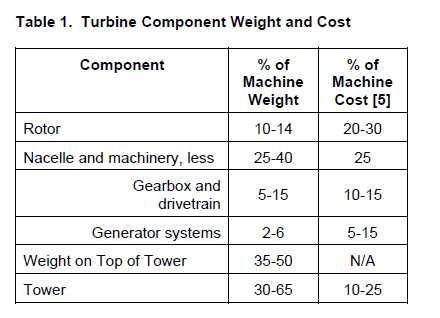
Different vendors make different parts.
- Blades plus nose (Vestas)
- Generators (Detroit Retrofits)
- Nacelle + Gearboxes (Vestas, Siemes)
- Towers (contract to any Iron works)
Material required in the supply chain:
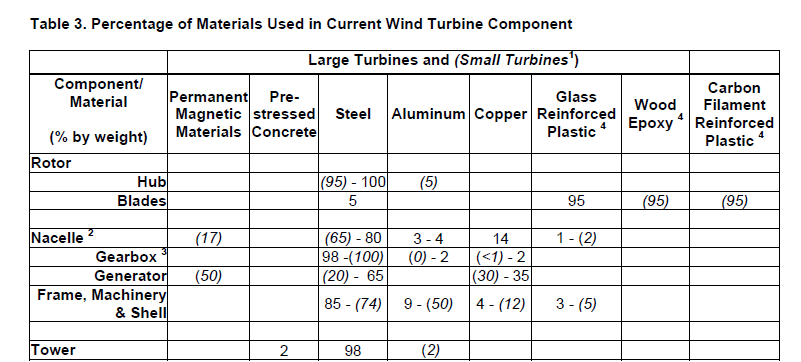

Some Observations:
- Turbine material usage is and will continue to be dominated by steel, but opportunities exist
for introducing aluminum or other light weight composites, provided strength and fatigue
requirements can be met.
- Elimination of the gearbox by using
variable speed generators will increase through use of
permanent magnetic generators on larger turbines increasing the need for magnetic materials.
- Simplification of the nacelle machinery may not only reduce costs, but also increase
reliability. Currently, gearbox failure is the biggest problem for Wind Turbines.
- Blades are primarily made of GRP, which is expected to continue. Increased use of CFRP may
help to reduce weight and cost.
- Prestressed concrete towers are likely to be used more, but will need a substantial amount of
steel for reinforcement.
- Wind turbine component and materials manufacturing are major and expanding business opportunities for at least the next 20 years.
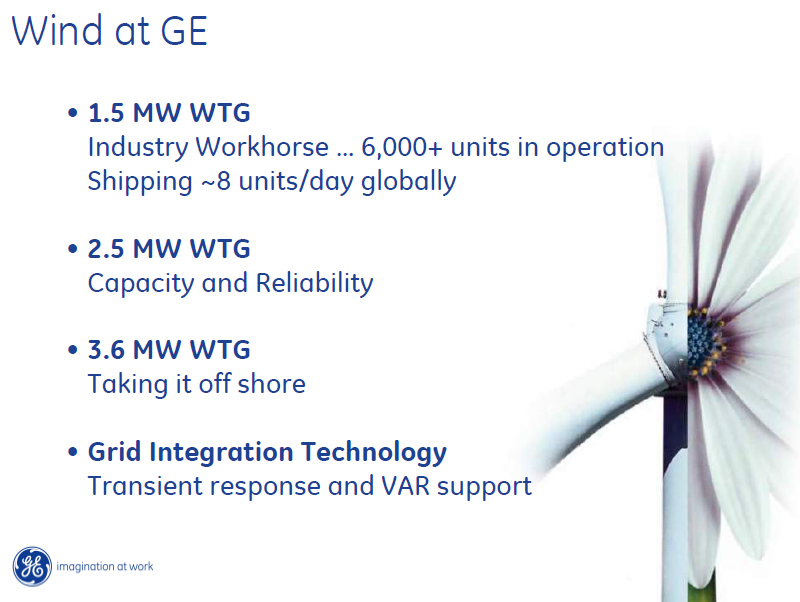
8 x 1.5 MW x 365 = 4400 MW per year (or a coal fired nameplate capacity replacement time of 100 years)
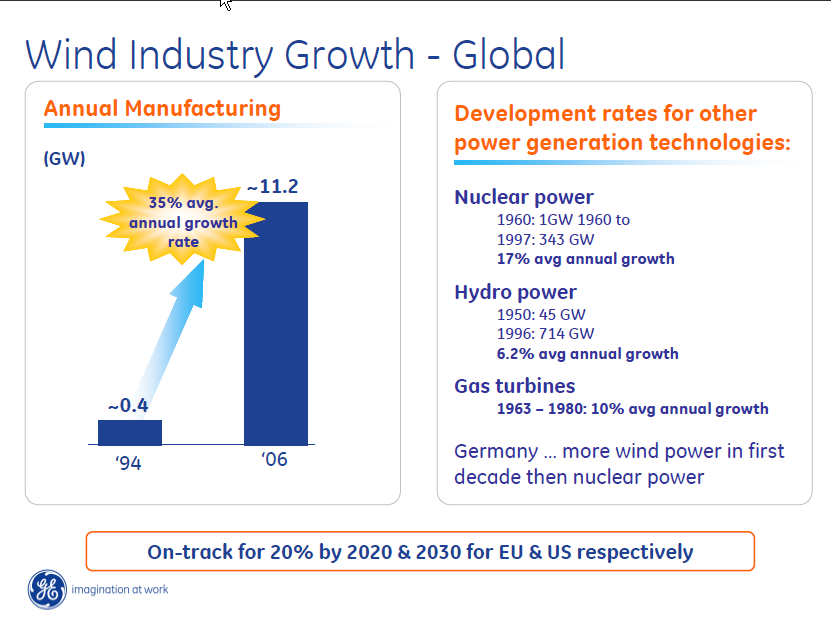
35% average growth is impressive but ultimately requires commensurate growth in all supply chain sectors.
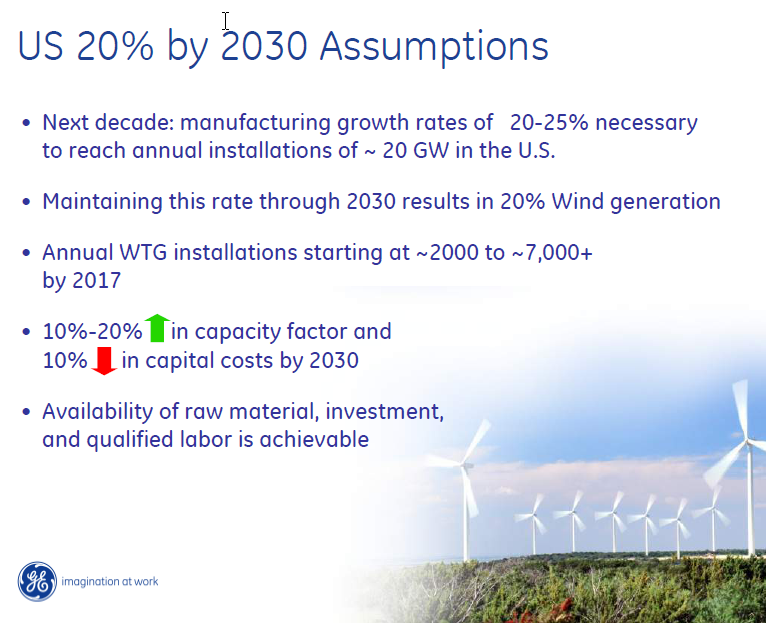
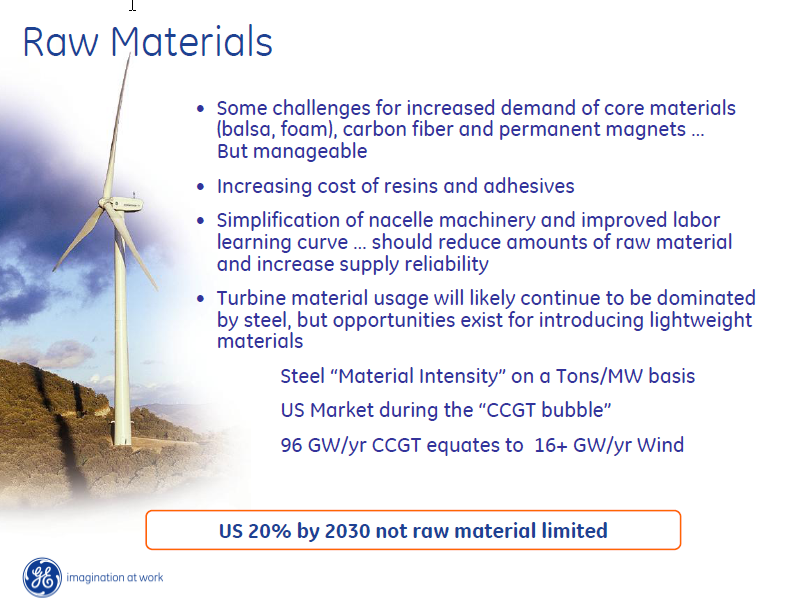
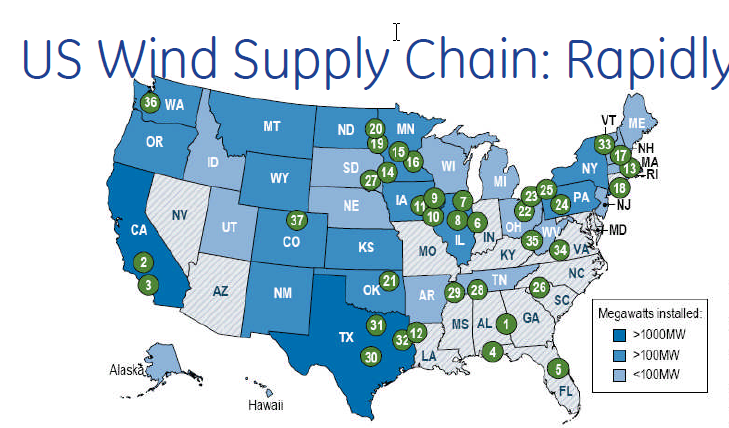



Bottom line here is that Wind energy is driven by a materials supply chain which
ultimately involves individual manufacturing sites and component integration.
A similar material supply chain is involved with the Concentrated Solar Troughs but
the supply chain for PV cells is much different and involves a chemical component (associated
with general semiconductor processing.
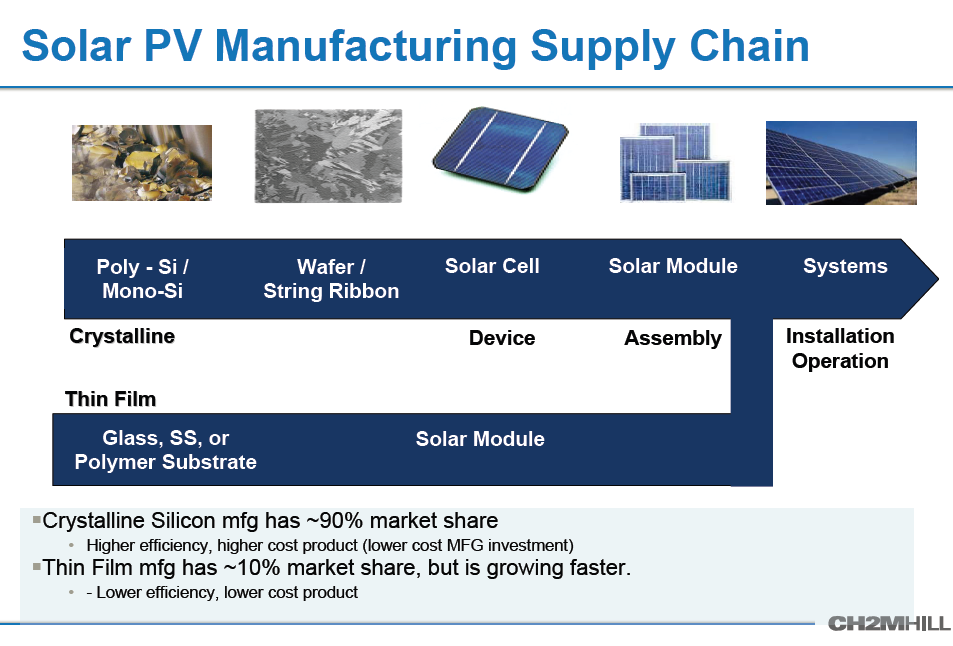

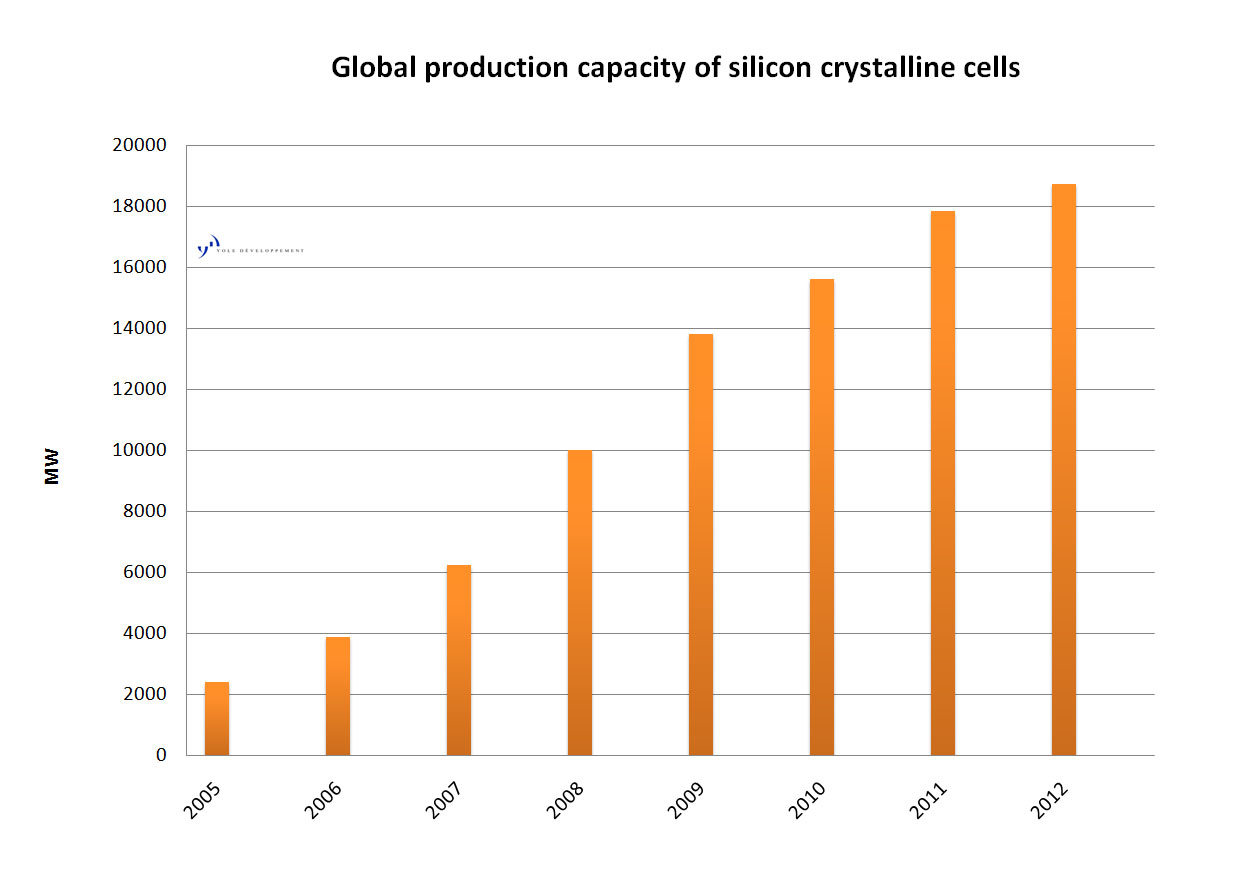
But what is plotted here are Peak MW of production (i.e. when the sun is overhead and its clear). Need to divide this by a factor of 3 for daily.
So Global production is then expected to be equivalent to
6000 MW by 2012. 6000 puny MW  per year.
This is nothing. Solar PV would have to ramp up by a factor
of 10 globally to actually start having a real impact.
per year.
This is nothing. Solar PV would have to ramp up by a factor
of 10 globally to actually start having a real impact.
Current China is the main driver in PV growth.
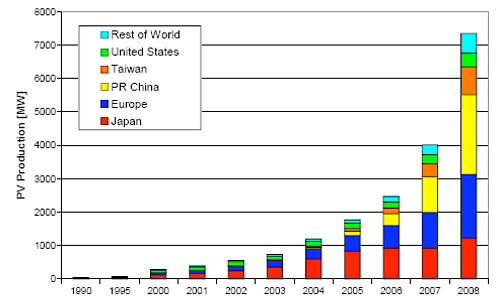
Ultimately this leads to the important concept of Energy Payback Time.
This is the timescale over which the total supply chain energy of manufacturing is paid back by harvested energy from the device. This is a difficult calcuation to make but as it stands now.
- EPBT for Solar PV at best is 2.5 years: This depends primarily on average
PV efficiency and average PV insolation
- EPBT for Wind Turbine is now at about 3-4 months: This depends mostly on turbine
capacity. The energy required to make a 3 MW turbine is a lot less than 2 times the
energy it takes to make a 1.5 MW wind turbine.
But, the energy payback times of concentrating solar power systems (e.g. solar troughs) is comparable to wind energy (5-8 months) because that technology has a similiar material supply chain it just doesn't have the land use scalability of wind.
US energy policy should therefore to be build wind farms where its windy and solar trough farms where it is sunny.
Duh ...